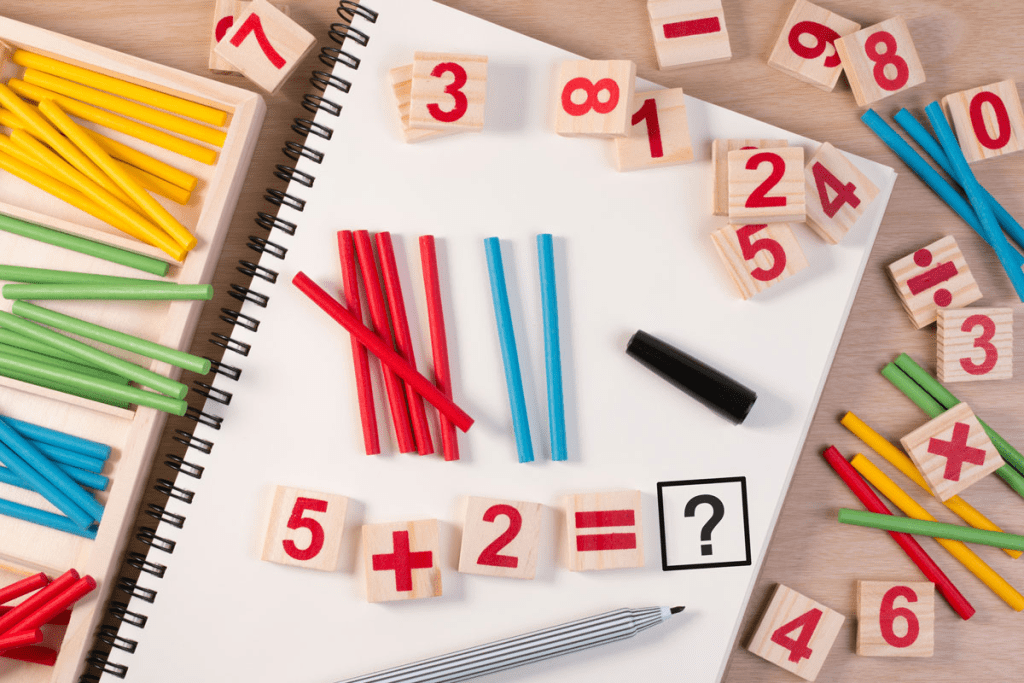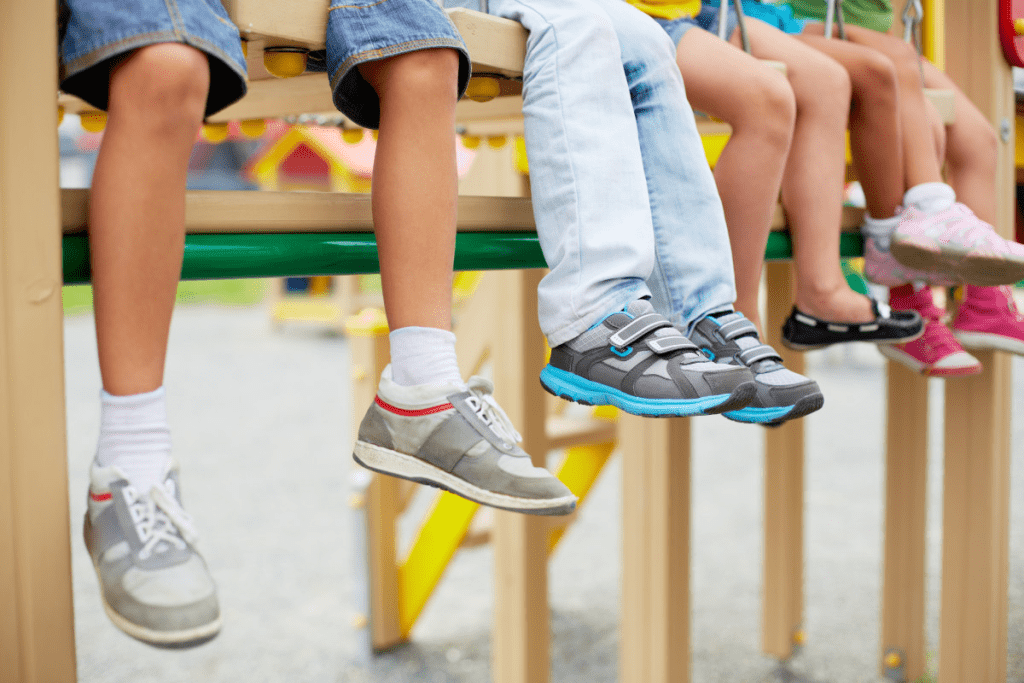Last Updated on October 21, 2025 by mcelik
It’s important to know when kids hit certain counting milestones. Most start saying numbers in order between 2 and 3 years old. Using picture books can be a fun and effective way to help children learn counting during this stage.

At LivHospital, we help kids reach their cognitive goals in new ways. By age 2, they can count to 10. But really getting numbers takes a bit longer, from 2 to 4 years. Picture books are key in teaching this. They make learning fun through children’s book pages.
Choosing the right books for 2-year-olds can spark their interest in numbers. We believe in starting early to help them grow.
Learning to count is a key skill for young children. It’s important to know the milestones in early childhood. These milestones show how well a child is doing with numbers.

By 2 to 2.5 years, kids start to know numbers. This is the first step in learning to count. Exposure to numerals through books and games helps a lot. Even 15-month-olds can learn numbers if they see them often.
Between 28 and 36 months, kids can count up to 7. They start to see numbers in order. Using a rules book or counting games can help them practice.
By age 3, most kids can count up to 10. This shows they understand numbers better. Activities like counting toys or pictures in a word-by-picture book help them learn.
Knowing these milestones helps us see if a child needs extra help. It lets us support their early learning of numbers better.
It’s important to know the difference between just saying numbers and really understanding them. Rote counting means saying numbers in order, but it doesn’t mean a child gets the numbers’ meaning.
Rote counting is about memorizing numbers, often without understanding what they mean. On the other hand, number sense is about knowing the numbers’ value and what they represent. For example, a child with number sense can count toys and know the last number means the total.

How can you tell if your child is more than just memorizing numbers? Look for signs like counting objects right, knowing the last number is the total, and comparing numbers (like knowing 5 is more than 3). These signs show they’re developing number sense.
Children go through stages when learning to count. First, they might just memorize numbers 1 through 7. Then, they start to understand what these numbers mean. Watching your child count and helping with fun activities can help them grow.
Learning to count is a complex process for young children. It’s shaped by many factors. These include the environment, guidance, and individual differences.
Children are naturally curious. Their surroundings offer many chances to learn about numbers. Pointing out numbers in their surroundings can really help.
For example, counting stairs or reading number signs can make learning fun. It turns learning into an interactive experience.
Parental involvement is key in teaching children to count. Reading counting books together can help a child understand numbers. Parents can also count during daily activities like meals or getting dressed.
Children develop at different rates. Some learn to count quickly, while others need more time. It’s important to understand these individual developmental differences.
By recognizing these differences, parents can support their child’s counting skills. Exposure, guidance, and practice are essential. They help a child understand and count numbers.
Picture books are key in teaching young ones to count. They lay the groundwork for math skills later on. These books introduce numbers in a fun way. We’ve picked seven picture books that are great for teaching counting, sorted by age and type.
For the youngest, simple and colourful books are best. “1, 2, 3 to the Zoo” by Eric Carle uses animals and vehicles to teach counting. Another great pick is “Ten in the Bed” by Penny Dale, which tells a fun story about animals in a bed while teaching counting.
Some books focus on numbers 1-7, helping kids master these before moving on. “The Very Hungry Caterpillar” by Eric Carle is a classic that teaches counting from 1 to 5. “Seven Hungry Ants” by Elinor J. Pinczes teaches counting up to 7 in a fun way.
As kids get older, interactive books become more valuable. “Press Here” by Hervé Tullet encourages interaction that can help with counting. For a traditional counting story, “Five Little Monkeys” by Eileen Christelow is a fun, rhyming tale that counts down from five.
Here are seven picture books that teach counting skills, categorized for different age groups and learning styles:
These books not only teach counting but also spark a love for reading and learning in young children. By picking the right books, parents and teachers can make learning numbers a fun and engaging experience.
We can teach young children to count in fun ways. By adding counting to daily activities and play, learning becomes enjoyable.
Daily routines are perfect for counting. Counting spoons for breakfast or steps to the park makes counting a part of life. Counting games can be simple, like counting stairs or toys to put away.
Blocks, counting bears, or coins help kids understand counting. Tactile objects let kids explore numbers with their hands.
Songs and rhymes are great for teaching counting. Rhymes like “One, Two, Buckle My Shoe” make learning fun. Singing number songs together helps kids practice counting in a fun way.
Today, many interactive apps and digital tools make learning to count fun. These tools offer games and activities that match a child’s learning speed.
It’s important to know if your child is having trouble with counting. Counting is a basic skill that helps with math later on. If they struggle, it can make learning math hard.
Learning to count can be tough for kids. They might skip numbers or have trouble recognizing them. For example, they might say “1, 2, 3, 5” instead of “1, 2, 3, 4, 5”. Or they might not know what the number 7 looks like.
If your child keeps having trouble with counting, they might need extra help. Working with a teacher or tutor can make a big difference. Getting help early can help them catch up.
Here are some signs they might need extra support:
There are ways to help kids get better at counting. Using blocks or toys can make learning fun. Counting things in everyday life, like steps or fruit, can also help.
“The more we practice counting in a fun and engaging way, the more comfortable children become with numbers.”
A renowned child development specialist
Research shows early numeracy skills are key to later math success. Counting to 7 is a big part of this. It helps kids do well in math later on.
Many studies link early counting skills to better math later on. Kids who start strong in numeracy do well in math as they get older. This shows why we should focus on these skills early.
Early numeracy skills, like counting and recognizing numbers, are the basis for advanced math. Counting to 7 helps kids understand numbers and their relationships. This is key to math thinking.
Counting to 7 is not just simple; it’s a step towards understanding bigger numbers and complex math. As kids get better at counting small sets, they can tackle bigger numbers. They learn about number patterns and sequences.
At LivHospital, we focus on helping kids grow their minds. We know how important it is for them to learn numbers early. This helps them do well in school later on.
Counting games and picture books can really help kids get better at numbers. This makes it easier for them to learn even harder math stuff later.
Knowing what kids should be able to do with numbers helps parents help more. Making counting fun with games and books makes learning easier and more enjoyable.
Helping kids with counting is key to their math skills. We suggest using books and fun activities to build a strong number base. This helps them succeed in school for years to come.
Kids usually learn to count to 7 between 28 to 36 months. But, it really depends on how fast they grow and how much they see numbers around them.
Rote counting means just saying numbers in order from memory. True understanding means knowing what those numbers mean. A child shows they get it by counting things right and knowing how numbers relate to things.
Parents can help by making numbers a part of their child’s world. They can read books that teach counting and use hands-on activities to help kids understand numbers better.
Good books for teaching counting have numbers 1-7 and are fun for preschoolers. You can find lists of books for different ages and learning levels.
Children’s books usually have a few hundred words. They focus more on pictures and the story than on text.
If a child has trouble recognizing numbers or counting things correctly, they might need help. These signs mean they might not understand numbers as well as they should.
Learning to count early is key to math later on. It helps kids understand numbers and how they work together. This makes it easier to learn more complex math as they get older.
Good ways to teach counting include making it part of daily life. Use things you can touch to show numbers and sing songs that help kids remember counting.
Subscribe to our e-newsletter to stay informed about the latest innovations in the world of health and exclusive offers!